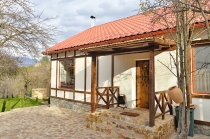.jpg&width=&height=)
| Capital | Wellington |
| Area | 268 680 km² |
| Population | 4 270 000 people |
| Official language | English and Maori |
| Currency | New Zealand Dollar |
| Climate | summer +10°C
winter +30°C |
| Recommended type of holiday | sightseeing |
About country
There’s a reason the sun shines on New Zealand before anywhere else – every new day in Aotearoa is something to cherish! Small, remote and thinly populated, yes, but NZ punches well above its weight with its outlandish scenery, fabulous festivals, superb food and wine, and magical outdoor experiences. Equally impressive is NZ’s potent, mainstream Maori culture. This is a country that recognises and celebrates its indigenous people – the world is a kinder, gentler, more respectful place down here! And while the fanfare surrounding the Lord of the Rings trilogy is waning, visiting the real-life Middle-earth still has a geeky allure - LOTR director Peter Jackson's filmmaking prowess still holds Wellington (aka ‘Wellywood’) in its thrall.
On the broader arts front, Kiwi live music remains brilliant (dub, hip-hop, reggae and rock), while NZ radio remains abysmal. Culturally, debate rages between anti- and pro-arts lobbies: one side would rather chew their arms off than see another art gallery open; the other sees cultural celebration as the future for both community and tourism. How does NZ forge its cultural identity? What role do the arts play? Do cultural attractions lure the tourists? From our perspective, they most certainly do!



Sightseeing
If you want to see the beautiful landscapes of New Zealand and explore some of the vast wilderness areas, grab a pack and put on your walking boots. There is no better way to see the New Zealand outdoors than by walking.
New Zealand has thousands of kilometres of walks. About 30 percent of the country is protected land with public access so there are plenty of tracks to choose from. They’ll take you through any terrain; long deserted beaches, rugged coastal walks, high country farmland, up glaciers, up mountains and through lush native rainforest.
New Zealand has nine ‘Great Walks’. These are the ones that take you to the most magnificent places, to the farthest from civilization. The most famous of these is the Milford Track in Fiordland. The 53-kilometre journey takes you to pristine lakes, sky-scraping mountain peaks, enormous valley views and the cascade of the tallest waterfall in New Zealand. Join one of the many tours or set out on your own adventure at your own pace.



Traditions
The culture of New Zealand is largely inherited from English and European custom, interwoven with Maori and Polynesian tradition. An isolated Pacific Island nation, New Zealand was comparatively recently settled by humans. Initially Māori only, then bicultural with colonial and rural values, now New Zealand is a cosmopolitan culture that reflects its changing demographics, is conscious of the natural environment, and is an educated, developed Western society.
Māori culture has predominated for most of New Zealand's history of human habitation. Māori voyagers reached the islands of New Zealand some time before 1300, though exact dates are uncertain. Over the ensuing centuries of Māori expansion and settlement, Māori culture diverged from its Polynesian roots. Māori established separate tribes, built fortified villages (Pā), hunted and fished, traded commodities, developed agriculture, arts and weaponry, and kept a detailed oral history. Regular European contact began approximately 200 years ago, and British immigration proceeded rapidly during the nineteenth century.
The colonists had a dramatic effect on the indigenous Maori, bringing religion, technology, and the English language. In 1840 Māori leaders signed the Treaty of Waitangi, intended to enable the tribes to live peacefully with the colonists. However after several incidents, the treaty was ignored and the New Zealand land wars broke out from 1845, with Māori suffering a loss of land and identity, while also increasingly becoming a minority group over the following century. Despite such setbacks, Māori culture has regained much of its lost influence in recent decades.



Cuisine
New Zealand's cuisine has been described as Pacific Rim, drawing inspiration from Europe, Asia and Polynesia. This blend of influences has created a mouth-watering range of flavours and food in cafes and restaurants nationwide. For dishes that have a distinctly New Zealand style, there's lamb, pork and cervena (venison), salmon, crayfish (lobster), Bluff oysters, paua (abalone), mussels, scallops, pipis and tuatua (both are types of New Zealand shellfish), kumara (sweet potato), kiwifruit, tamarillo and pavlova, the national dessert.
Its distinctiveness is more in the way New Zealanders eat, generally preferring as relaxed and unaffected as possible, in keeping with the laidback Kiwi psyche.


.jpg&width=160&height=120)




.jpg&width=&height=)











.jpg&width=160&height=120)


